�
Mathematica®forTheoreticalPhysics
Mathematica®forTheoreticalPhysicsClassicalMechanicsandNonlinearDynamicsSecondEditionGerdBaumannCD-ROMIncluded�
GerdBaumannDepartmentofMathematicsGermanUniversityinCairoGUCNewCairoCityMainEntranceofAlTagamoaAlKhamesEgyptGerd.Baumann@GUC.edu.egThisisatranslated,expanded,andupdatedversionoftheoriginalGermanversionofthework“Mathematica®inderTheoretischenPhysik,”publishedbySpringer-VerlagHeidelberg,1993©.LibraryofCongressCataloging-in-PublicationDataBaumann,Gerd.[MathematicaindertheoretischenPhysik.English]Mathematicafortheoreticalphysics/byGerdBaumann.—2nded.p.cm.Includesbibliographicalreferencesandindex.Contents:1.Classicalmechanicsandnonlineardynamics—2.Electrodynamics,quantummechanics,generalrelativity,andfractals.ISBN0-387-01674-01.Mathematicalphysics—Dataprocessing.2.Mathematica(Computerfile)I.Title.QC20.7.E4B38132004530′.285′53—dc222004046861ISBN-10:0-387-01674-0e-ISBN0-387-25113-8Printedonacid-freepaper.ISBN-13:978-0387-01674-0©2005SpringerScience+BusinessMedia,Inc.Allrightsreserved.Thisworkmaynotbetranslatedorcopiedinwholeorinpartwithoutthewrittenpermissionofthepublisher(SpringerScience+BusinessMedia,Inc.,233SpringStreet,NewYork,NY10013,USA),exceptforbriefexcerptsinconnectionwithreviewsorscholarlyanalysis.Useinconnectionwithanyformofinformationstorageandretrieval,electronicadaptation,com-putersoftware,orbysimilarordissimilarmethodologynowknownorhereafterdevelopedisfor-bidden.Theuseinthispublicationoftradenames,trademarks,servicemarks,andsimilarterms,eveniftheyarenotidentifiedassuch,isnottobetakenasanexpressionofopinionastowhetherornottheyaresubjecttoproprietaryrights.Mathematica,MathLink,andMathSourceareregisteredtrademarksofWolframResearch,Inc.PrintedintheUnitedStatesofAmerica.(HAM)987654321springeronline.com�
To Carin,for her love, support, and encuragement.�
PrefaceAs physicists, mathematicians or engineers, we are all involved withmathematical calculations in our everyday work. Most of the laborious,complicated, and time-consuming calculations have to be done over andover again if we want to check the validity of our assumptions andderive new phenomena from changing models. Even in the age ofcomputers, we often use paper and pencil to do our calculations.However, computer programs like Mathematica have revolutionized ourworking methods. Mathematica not only supports popular numericalcalculations but also enables us to do exact analytical calculations bycomputer. Once we know the analytical representations of physicalphenomena, we are able to use Mathematica to create graphicalrepresentations of these relations. Days of calculations by hand haveshrunk to minutes by using Mathematica. Results can be verified withina few seconds, a task that took hours if not days in the past.The present text uses Mathematica as a tool to discuss and to solveexamples from physics. The intention of this book is to demonstrate theusefulness of Mathematica in everyday applications. We will not give acomplete description of its syntax but demonstrate by examples the useof its language. In particular, we show how this modern tool is used tosolve classical problems. �
This second edition of Mathematicain Theoretical Physics seeks toprevent the objectives and emphasis of the previous edition. It isextended to include a full course in classical mechanics, new examplesin quantum mechanics, and measurement methods for fractals. Inaddition, there is an extension of the fractal's chapter by a fractionalcalculus. The additional material and examples enlarged the text somuch that we decided to divide the book in two volumes. The firstvolume covers classical mechanics and nonlinear dynamics. The secondvolume starts with electrodynamics, adds quantum mechanics andgeneral relativity, and ends with fractals. Because of the inclusion ofnew materials, it was necessary to restructure the text. The maindifferences are concerned with the chapter on nonlinear dynamics. Thischapter discusses mainly classical field theory and, thus, it wasappropriate to locate it in line with the classical mechanics chapter.The text contains a large number of examples that are solvable usingMathematica. The defined functions and packages are available on CDaccompanying each of the two volumes. The names of the files on theCD carry the names of their respective chapters. Chapter 1 comments onthe basic properties of Mathematica using examples from different fieldsof physics. Chapter 2 demonstrates the use of Mathematica in astep-by-step procedure applied to mechanical problems. Chapter 2contains a one-term lecture in mechanics. It starts with the basicdefinitions, goes on with Newton's mechanics, discusses the Lagrangeand Hamilton representation of mechanics, and ends with the rigid bodymotion. We show how Mathematica is used to simplify our work and tosupport and derive solutions for specific problems. In Chapter 3, weexamine nonlinear phenomena of the Korteweg–de Vries equation. Wedemonstrate that Mathematica is an appropriate tool to derive numericaland analytical solutions even for nonlinear equations of motion. Thesecond volume starts with Chapter 4, discussing problems ofelectrostatics and the motion of ions in an electromagnetic field. Wefurther introduce Mathematica functions that are closely related to thetheoretical considerations of the selected problems. In Chapter 5, wediscuss problems of quantum mechanics. We examine the dynamics of afree particle by the example of the time-dependent Schrödinger equationand study one-dimensional eigenvalue problems using the analytic andviiiPreface�
numeric capabilities of Mathematica. Problems of general relativity arediscussed in Chapter 6. Most standard books on Einstein's theory discussthe phenomena of general relativity by using approximations. WithMathematica, general relativity effects like the shift of the perihelioncan be tracked with precision. Finally, the last chapter, Chapter 7, usescomputer algebra to represent fractals and gives an introduction to thespatial renormalization theory. In addition, we present the basics offractional calculus approaching fractals from the analytic side. Thisapproach is supported by a package, FractionalCalculus, which is notincluded in this project. The package is available by request from theauthor. Exercises with which Mathematica can be used for modifiedapplications. Chapters 2–7 include at the end some exercises allowingthe reader to carry out his own experiments with the book.Acknowledgments Since the first printing of this text, many peoplemade valuable contributions and gave excellent input. Because thenumber of responses are so numerous, I give my thanks to all whocontributed by remarks and enhancements to the text. Concerning thehistorical pictures used in the text, I acknowledge the support of thehttp://www-gapdcs.st-and.ac.uk/~history/ webserver of the University ofSt Andrews, Scotland. My special thanks go to Norbert Südland, whomade the package FractionalCalculus available for this text. I'm alsoindebted to Hans Kölsch and Virginia Lipscy, Springer-Verlag NewYork Physics editorial. Finally, the author deeply appreciates theunderstanding and support of his wife, Carin, and daughter, Andrea,during the preparation of the book.Ulm, Winter 2004 Gerd BaumannPrefaceix�
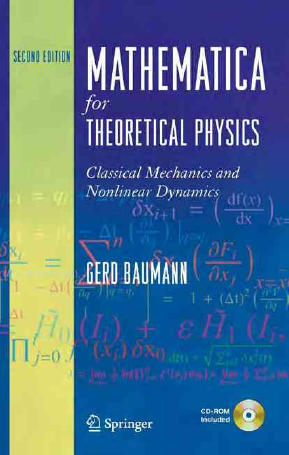
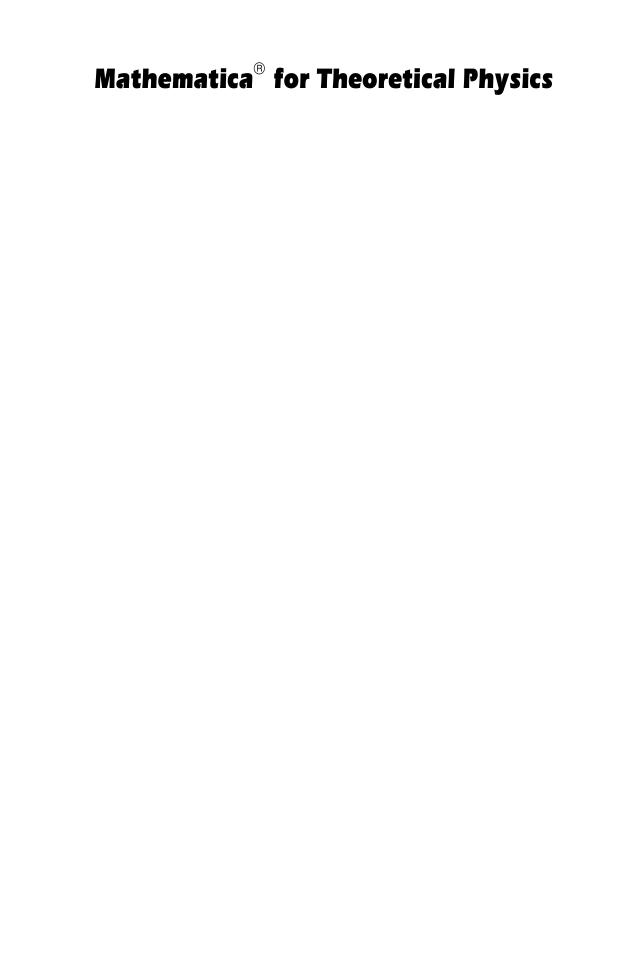
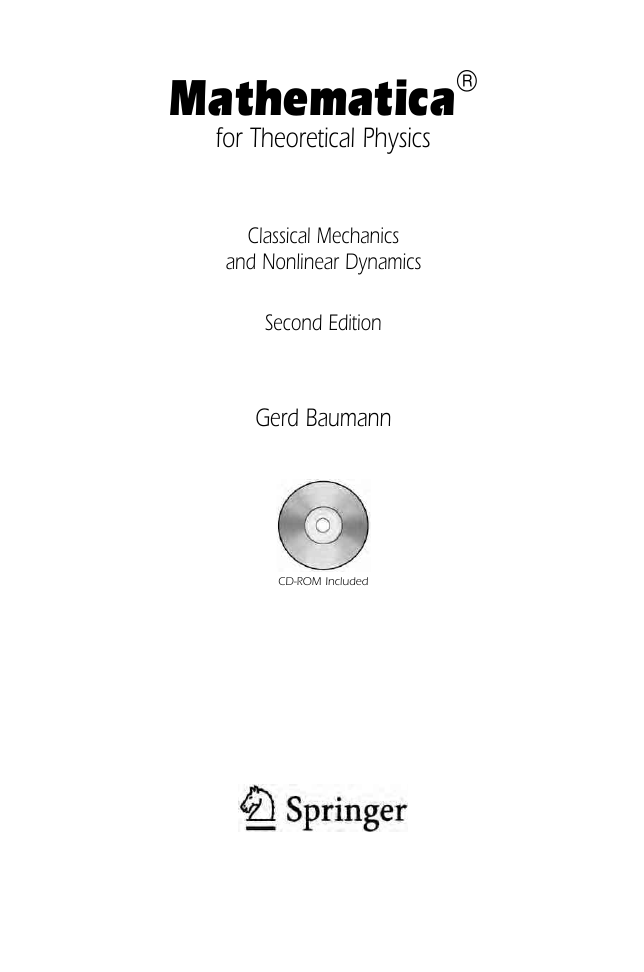
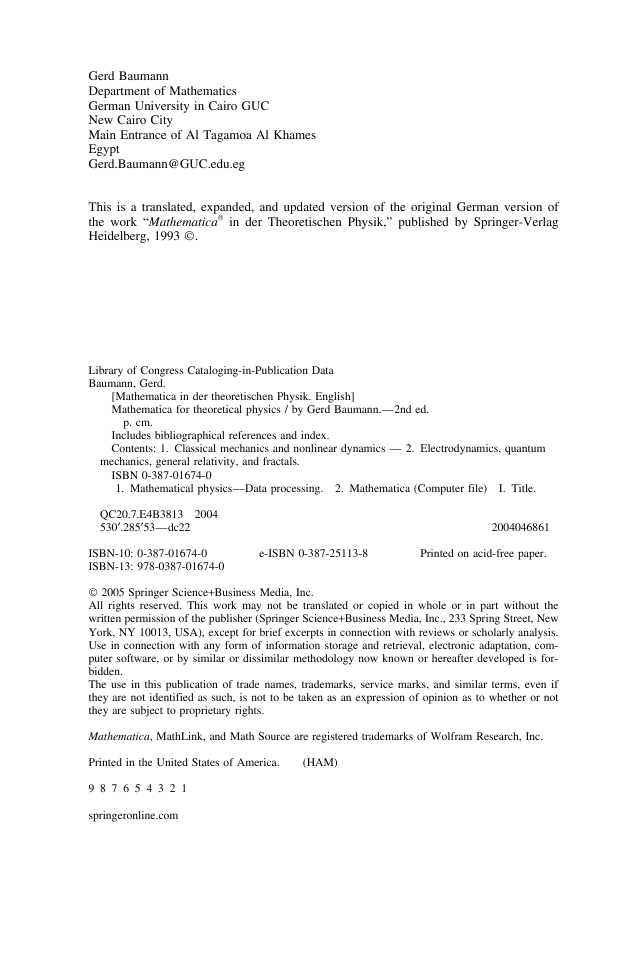

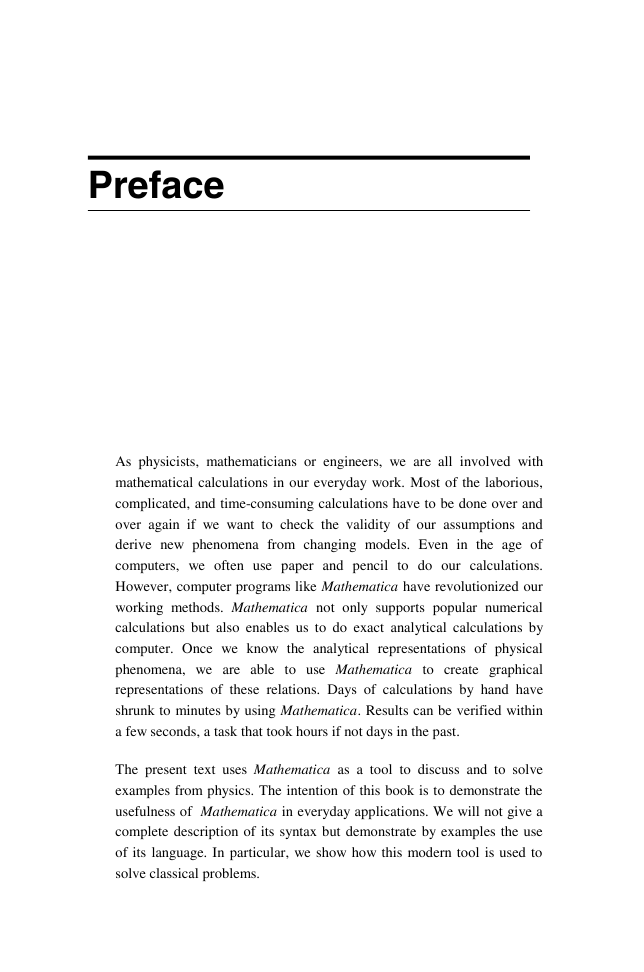
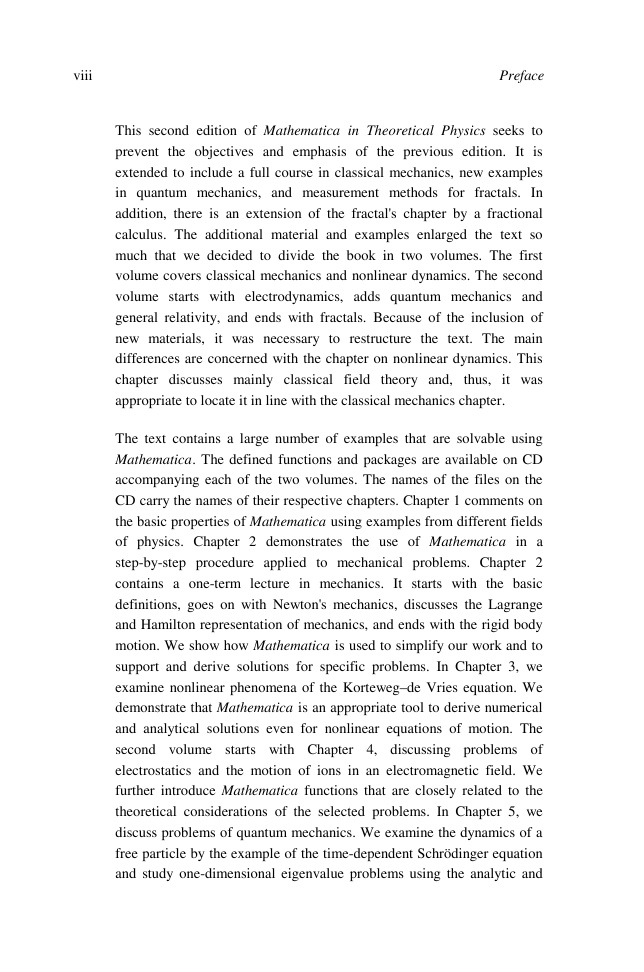
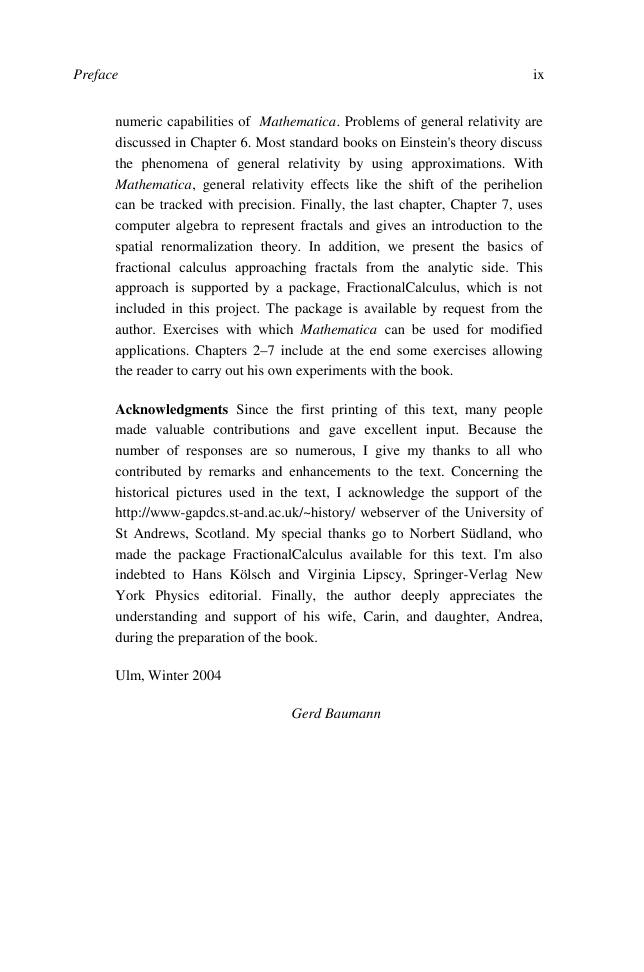








 2023年江西萍乡中考道德与法治真题及答案.doc
2023年江西萍乡中考道德与法治真题及答案.doc 2012年重庆南川中考生物真题及答案.doc
2012年重庆南川中考生物真题及答案.doc 2013年江西师范大学地理学综合及文艺理论基础考研真题.doc
2013年江西师范大学地理学综合及文艺理论基础考研真题.doc 2020年四川甘孜小升初语文真题及答案I卷.doc
2020年四川甘孜小升初语文真题及答案I卷.doc 2020年注册岩土工程师专业基础考试真题及答案.doc
2020年注册岩土工程师专业基础考试真题及答案.doc 2023-2024学年福建省厦门市九年级上学期数学月考试题及答案.doc
2023-2024学年福建省厦门市九年级上学期数学月考试题及答案.doc 2021-2022学年辽宁省沈阳市大东区九年级上学期语文期末试题及答案.doc
2021-2022学年辽宁省沈阳市大东区九年级上学期语文期末试题及答案.doc 2022-2023学年北京东城区初三第一学期物理期末试卷及答案.doc
2022-2023学年北京东城区初三第一学期物理期末试卷及答案.doc 2018上半年江西教师资格初中地理学科知识与教学能力真题及答案.doc
2018上半年江西教师资格初中地理学科知识与教学能力真题及答案.doc 2012年河北国家公务员申论考试真题及答案-省级.doc
2012年河北国家公务员申论考试真题及答案-省级.doc 2020-2021学年江苏省扬州市江都区邵樊片九年级上学期数学第一次质量检测试题及答案.doc
2020-2021学年江苏省扬州市江都区邵樊片九年级上学期数学第一次质量检测试题及答案.doc 2022下半年黑龙江教师资格证中学综合素质真题及答案.doc
2022下半年黑龙江教师资格证中学综合素质真题及答案.doc